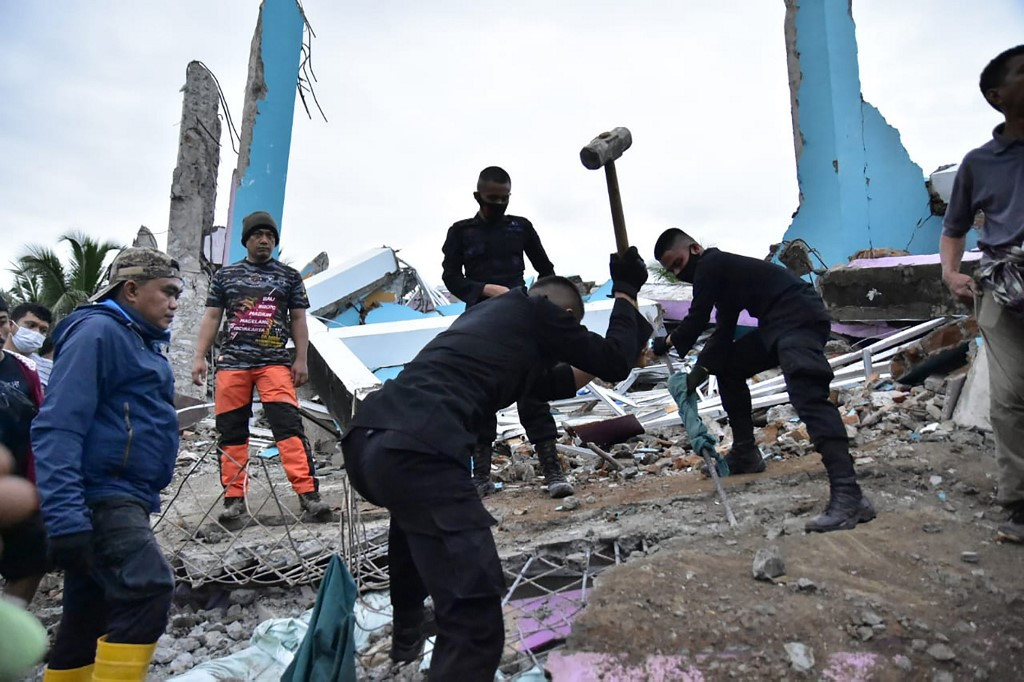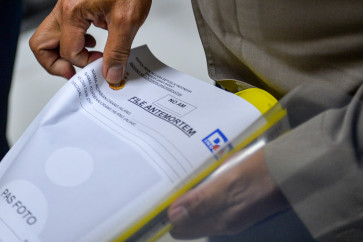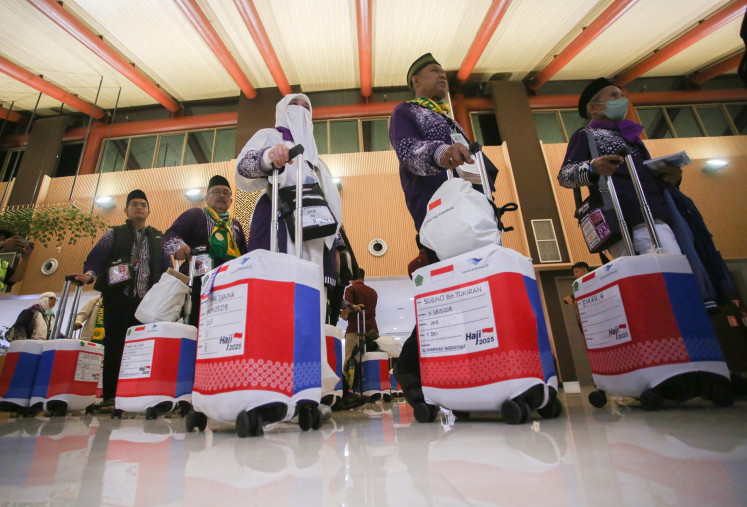Children’s disaster education remains inadequate: KPAI
Emergency training at school heavy on theory, light on practice
Change text size
Gift Premium Articles
to Anyone

Twenty-three-year-old Priscilla Maharani recalled how terrifying it was when she woke up to a powerful earthquake one morning in Sleman, Yogyakarta. She was 8 at the time.
“I remember that I was trapped inside my room because I was too scared to move or do anything at all. I was so young back then, and the memory of being unable to do anything amid the quake is so scary,” Priscilla said.
Although 15 years have passed, the incident still haunts her. Priscilla feels grateful that neither she nor her family members were injured in the earthquake, which devastated Yogyakarta and killed more than 5,000 people. She still wished, however, that she had been more prepared.
Situated along the Ring of Fire, a belt of seismic activity encircling the Pacific basin that is formed by a string of active volcanoes, Indonesia is no stranger to natural disasters such as earthquakes, volcanic eruptions and tsunamis.
This year alone, the country recorded two earthquakes in West Sulawesi in January that killed at least 81 people and left thousands of others homeless, while South Kalimantan saw its first major flood in 50 years that resulted in the deaths of 15 people and displaced more than 100,000.
Read also: Indonesia braces for more weather disasters. Climate crisis will make them worse
At least 185 natural disasters occurred in the first few weeks of 2021, with floods, landslides and whirlwinds dominating the tally. Last year, the country recorded more than 2,900 natural disasters.
Despite the alarming rate, minimal effort has been made to prepare Indonesians for such emergency situations from an early age, when according to the National Disaster Mitigation Agency (BNPB), children have also been among the victims.
The Education and Culture Ministry issued a regulation in 2019 on programs for safe schools (SPAB) that encourages schools, as well as the public and local administrations, to provide disaster training for students, either in class or as an extracurricular activity.
Read also: Government plans mitigation education for 250,000 schools in disaster-prone areas
However, Indonesian Child Protection Commission (KPAI) commissioner Retno Listyarti said disaster preparation training for children remained inadequate as only a few schools offered the program.
“Moreover, [disaster preparation] training at schools has been ineffective so far as it’s very heavy on theory without putting any of it into practice,” Retno told The Jakarta Post on Thursday.
The Green School in Bali is among the few schools in Indonesia that provides disaster preparation training for students on a regular basis. Available for high school students as an elective, it covers basic first aid training and survival skills for when a disaster strikes.
Dillon Carpenter-Dorworth, one of the instructors, said students have found the program helpful as it also prepared them for the emotional stress that follows emergency situations.
“Some students were a bit hesitant during our practice scenarios, especially as they could be intense. When that happens, I usually let them take it slow, give them some space and let them find their own way,” he said.
Read also: Floods hit several Indonesian cities as rainy season nears peak
Retno from the KPAI believes that simulations are the most important part of disaster preparation training as it taught students how to respond quickly in life or death situations, whether they occurred inside or outside of school.
She suggested that the government add disaster preparation simulations to existing school subjects, such as geography or physics, to allow students to practice what they were taught about disasters on a regular basis.
“It’s best not to separate [disaster preparation] simulations from existing school subjects as the current curriculum is already taxing for students as it is.”









